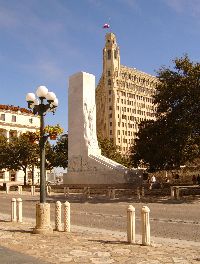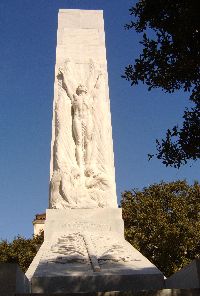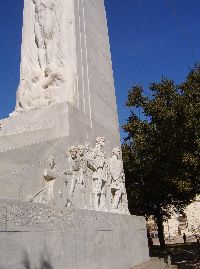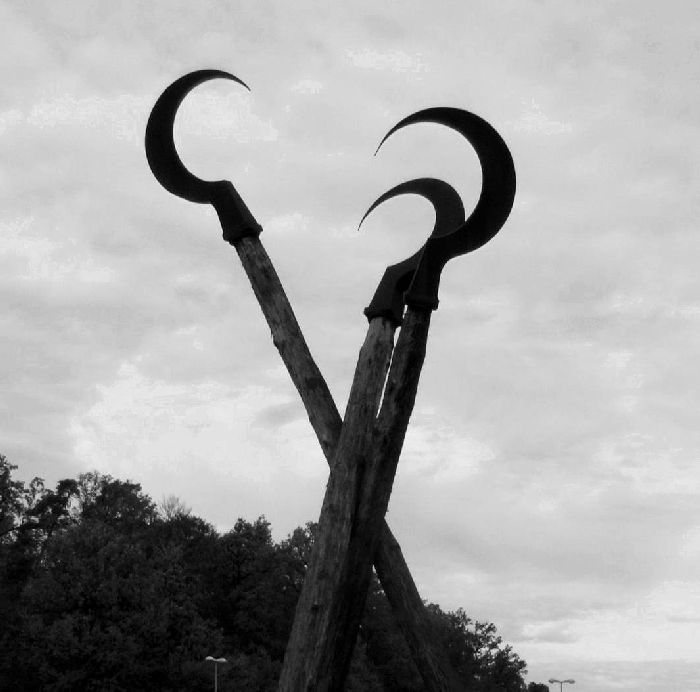The Alamo Centennial Monument, San Antonio, Texas
Pictures and text by Stephanie Beverly
These pictures were taken of the Alamo Centennial monument, which is located in downtown San Antonio, Texas. It stands right across from the Alamo itself, and is widely visited by locals and tourists alike. The pictures were taken in the last Friday of January, 2007 during the early morning when the crowds were light.
This monument was constructed to honour the centennial of the Battle of the Alamo, which took place in 1836. The Battle of the Alamo was a thirteen day struggle in the heart of Texas for independence from the centralized government of Mexico. The Alamo itself, originally constructed as a mission and named "Mision San Antonio de Valero", is still partially standing in what is now downtown San Antonio. The memorial itself was erected just across a walkway from the Alamo, and receives just as many visitors. The monument was carved by an Italian artist named Pompeo Luigi Coppini, who is well known for many other works of art in the state of Texas.
When visiting the monument one assumes that it is related to the Alamo, but there is little information to go on from there. The year it was constructed and who the artist was, and even that it is a centennial memorial is not apparent to the casual visitor. It is only through proximity to the Alamo itself that one knows what it is depicting. What the memorial does tell us, if we were to view it out of context on its own, is that a battle was fought. The clear depiction of men manning cannons on both sides makes that clear, along with the approximate date that we could attach to the battle. Some of the men appear young (the youngest volunteer was 16), but all of the faces are determined. We would not know that they were faced with unbeatable odds, or that they would all eventually meet their deaths in this battle. The front of the monument speaks of rebirth, or the birth of something greater than the lives of the men involved. The beautifully depicted image of a strong, whole and healthy man rising above the burning corpses of the combatants is a hopeful message. If we delved deeper in to the history, we would know that all but one of the corpses of the defenders was burned later by the Mexican army and that is partly the origins of the symbolism. From the monument alone, one could assume that whatever battle took place here, it was a victory. In that, this monument is misleading. The Battle of the Alamo was an utter defeat for the defending volunteers, but it served to mobilize the entire territory and the Mexican army was eventually driven out of Texas. The battle cry of "Remember the Alamo" is still heard there today.
From the monument alone, it is not clear that many of the defenders were of Mexican descent, and they certainly were. It is interesting that the inscription is in English only, but the unwriten message could be that all defenders identified strongly with the English speaking territory of Texas. In visiting San Antonio, one cannot help but see the influence and impact of a very large Mexican immigrant population, and from living here I know that they take as much pride in the Alamo as anyone. In what could have been a divisive event (Texan versus Mexican), it was instead an event that brought together the residents of the territory, who still today define themselves first as "Texans."




